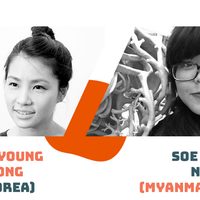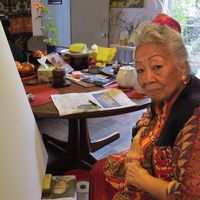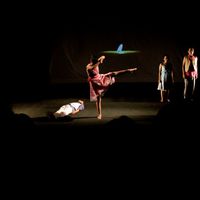Feminism and women artists in Indonesian Contemporary Art
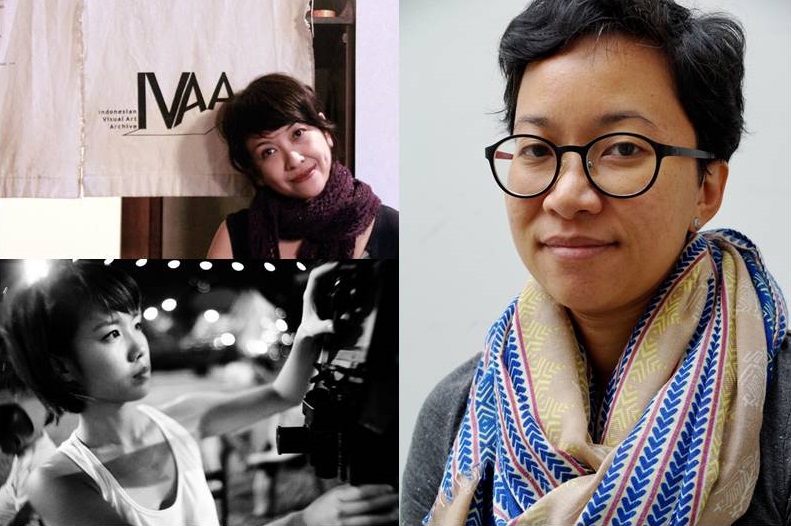 Contributed by Naima MORELLI
Contributed by Naima MORELLINaima Morelli looks at what feminism means in the Indonesian art world with art historian Farah Wardani, artist Samantha Tio and researcher Wulan Dirgantoro – who just published a book on the topic.
[caption id="attachment_64524" align="aligncenter" width="577"]
Is it possible to look at the practices of Indonesian women artist in a feminist perspective? This is precisely what researcher and PhD in Indonesian Studies Wulan Dirgantoro decided to investigate with her book “Feminism and Indonesian Contemporary Art: Defining Experiences” (Amsterdam University Press). Though the book has an academic scope, it sparked conversation about women in Indonesian art.
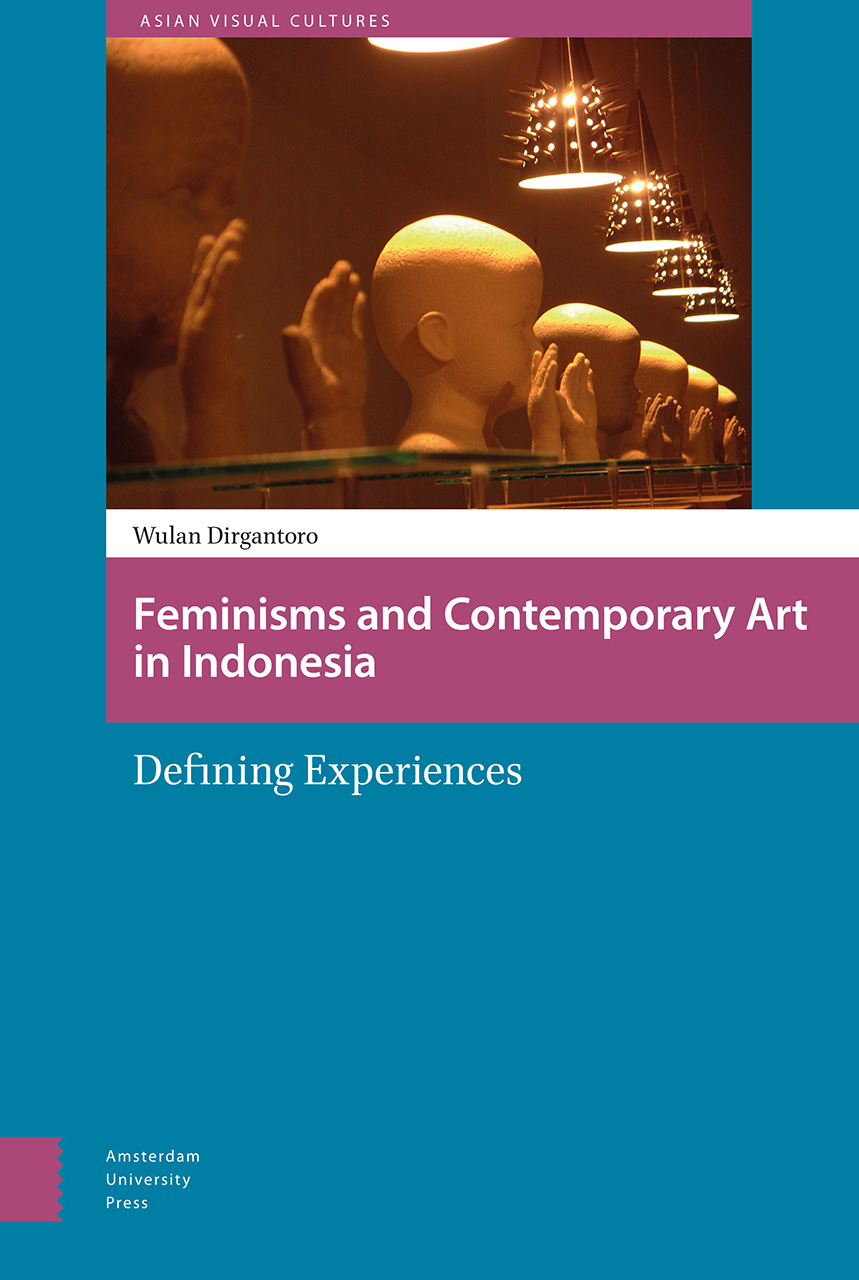 As a child browsing through her grandfather’s book of the Sukarno art collection, Wulan Dirgantoro grew up with a very classical image of Indonesian art. When she started university she began to “unlearn” those images and relearn them through more critical eyes. It was precisely in those formative years that she noticed the absence of women artists from the early period of Indonesian modern art. This was not because the lack of thereof, but because no one wrote about them.
As a child browsing through her grandfather’s book of the Sukarno art collection, Wulan Dirgantoro grew up with a very classical image of Indonesian art. When she started university she began to “unlearn” those images and relearn them through more critical eyes. It was precisely in those formative years that she noticed the absence of women artists from the early period of Indonesian modern art. This was not because the lack of thereof, but because no one wrote about them.Her interest was also fed by the discussions of gender issues in mainstream media in the aftermath of the fall of Suharto:
“During that time it was really liberating to see/read/hear the idea discussed more widely. Sadly, this openness did not last for long, but it was already enough to push me to write and research more about it.”
In 2007 Wulan co-authored with journalist Carla Bianpoen and art historian Farah Wardani “The Curtain Opens: Indonesian Women Artists”. Farah Wardani recalls that there was no such book ever published before and there was a demand:
“At that time there had already been a mature development of both women’s studies as well as a great number of prominent women artists in history. The reactions were very positive and today the book is a reference for whoever approaches Indonesian art. The book acknowledged women’s works in terms of ideas and creation in a scene dominated by men.”
Different parameters for feminism
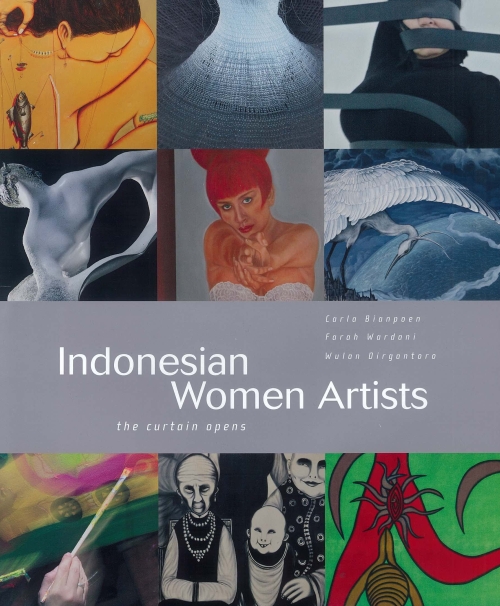 Wulan Dirgantoro explains that feminism was and still is considered as a dirty word in Indonesia, because of its association with western ideologies. For this very reason, in “Feminism and Indonesian Contemporary Art: Defining Experiences”, the author contributed a more nuanced perspective of the feminism, showing that there is almost no unifying definition. This creates a bigger picture of what it means to be a woman in the Indonesian society.
Wulan Dirgantoro explains that feminism was and still is considered as a dirty word in Indonesia, because of its association with western ideologies. For this very reason, in “Feminism and Indonesian Contemporary Art: Defining Experiences”, the author contributed a more nuanced perspective of the feminism, showing that there is almost no unifying definition. This creates a bigger picture of what it means to be a woman in the Indonesian society.“Furthermore, this diversity of understanding not only informed the artist’s approach to the issues of gender injustice, religion, politics, and ethnicity but also to my position as a feminist researcher,” adds Wulan.
From her role as an historian and working with archives - first at the Indonesian Visual Art Archive (IVAA), today at National Gallery Singapore Resource Centre - Farah Wardani thinks that it is still possible to read prominent feminist-inclined works with established frameworks: “This is because essentially, modern and contemporary art medium that they are using are still rooted in the Western construct.” However, she believes there should be alternative parameters in reading per cases, taking into account their cultural background or social contexts.
She makes the example of the works of the late IGAK Murniasih (Murni), which are a blend of a Balinese traditional-modern hybrid, while her approaches of subject-matters are very contemporary but at the same time imbued with her cultural upbringing.
“Murni is a trail blazer. Her strength and courage is infectious,” says artist Samantha Tio (Mintio), who is the Creative Director of the project and show “Merayakan Murni” in Bali. “She broke many boundaries for what could be expressed in art and set the bar high for what a woman artist of Bali could achieve. She is a role model not just for young women artists, but for artists both men or women and for people dealing with trauma and pain or fighting for their lives.”
When it comes to subscribing to a global definition of feminism, Mintio thinks that we have to take different parameters altogether, as every society and the role of women in it is unique – especially in a country as diverse as Indonesia. She believes that alternative modes of looking at art, for example the consideration of artistic labour, can reveal much more than the more adoption of Western models.
Mintio also sees virtue in Indonesia not being so “up-to-date”, especially in the globalised course for progress. “Coming from Singapore, I can distinctly feel how the pace here is different - it is a lot more measured, more meditative and I think this allows for a wider space for negotiation especially when it comes to ideas as intricate as the perspectives on gender. Taking time can be positive in the way it can give rise to genuine change. But that means that the dialogue on gender has to be kept constantly alive; that as a society we have to deal with its deliberations self-reflexively, being mindful of the global movements while making steps that addresses the local context.”
Being a woman in Indonesia
Being born and raised in the Lion city, Mintio has always regarded her position in the Indonesian art world as an outsider and observer. She noticed factions within the Indonesian art world, dividing artists not just across gender but also categories, like visual language, geography and seniority.
“It is challenging for female artists to be constantly part of this game of amassing. At some point of her career, women have to take a step back to be caregivers, be it to their partner, children or aging relatives. In Indonesia, emotional labour and caregiving falls almost automatically on the shoulders of a woman.”
To that situation, Mintio reacted creating collaborations, both hands-on, working with communities, and to advance the conversation. In her personal work, she has been working with the genderless alias of Mintio in the field of photography, which has been traditionally dominated by men.
In her professional practiced, Farah Wardani has encountered double standards: “On one side, it’s always too easy to slip into the ‘token female’ role, as ironically I found that some opportunities were given to me with the fact that I’m a woman. But on the other hand, the perpetual issue is how to be taken seriously in terms of ideas and this affects how to realise it, of which the privilege is always given to men first and we have to work harder to be heard and manifest our ideas.”
Farah finds the Indonesian art scene still very masculine and heteronormative, with few LGBT practitioners and more women settled in the behind-the-scene work: “This is different with the art scene in the other parts of the worlds. However, in some aspects the Indonesian art scene is also quite ‘matriarchal’ where you can find very strong-headed and fierce women in the leading management role. This is quite a good balance. Women in a kind of ‘motherly’ concept are being put on a pedestal – mainly in Javanese and Malay cultures. There’s an issue also about it, but it helps.”
The future of feminism in Indonesia
Even though Mintio wished that there were more women artists from Indonesia entering the art world, she is confident in the power of technology to "erode older establishments and give a platform for the ideas and voices that have been, for too long a time, suppressed".
Farah also sees developments: “Now I don’t see women artists boxed that way and regarded simply as artists, curators and art workers. I find it very positive. Still there are perpetual challenges but I think it’s going in a positive way. The fact how global network of art scenes are coming together also helps.”
Also Wulan witnessed women becoming increasingly active and taking more public roles and decisions in the art world. She feels it is not enough for women artists to initiate the discussion on gender issues but art/cultural institutions and academia need to be involved as well.
“I think this is still lacking. With the global interest on Indonesian and modern contemporary art, a lack deeper engagement with such a sensitive topic does point out to one of the main problems in Indonesian art world. Because Indonesia remains a deeply patriarchal place, so the challenges today might be in what ways these new roles can bring positive change, not only for women but also for other under-represented minorities.”
Links:
- Feminism and Indonesian Contemporary Art: Defining Experiences: http://nl.aup.nl/download/9789048526994%20Look%20Inside.pdf
- Interview with Wulan Dirgantoro about Feminism and Indonesian Contemporary Art: Defining Experiences: http://www.lasalle.edu.sg/praxis-press/in-conversation-with-dr-wulan-dirgantoro/
- Interview with Farah Wardani: http://nowjakarta.co.id/farah-wardani-s-lifelong-dedication-to-arts
- The Curtain Opens: Indonesian Women Artists at the Asia Art Archive: http://aaa.org.hk/en/collection/search/library/indonesian-women-artists-the-curtain-opens
- Ketemu (Samantha Tio’s art space): https://ketemuprojectspace.com/
- Article on the project Merayakan Murni : https://www.cobosocial.com/dossiers/murni-indonesian-painter/

